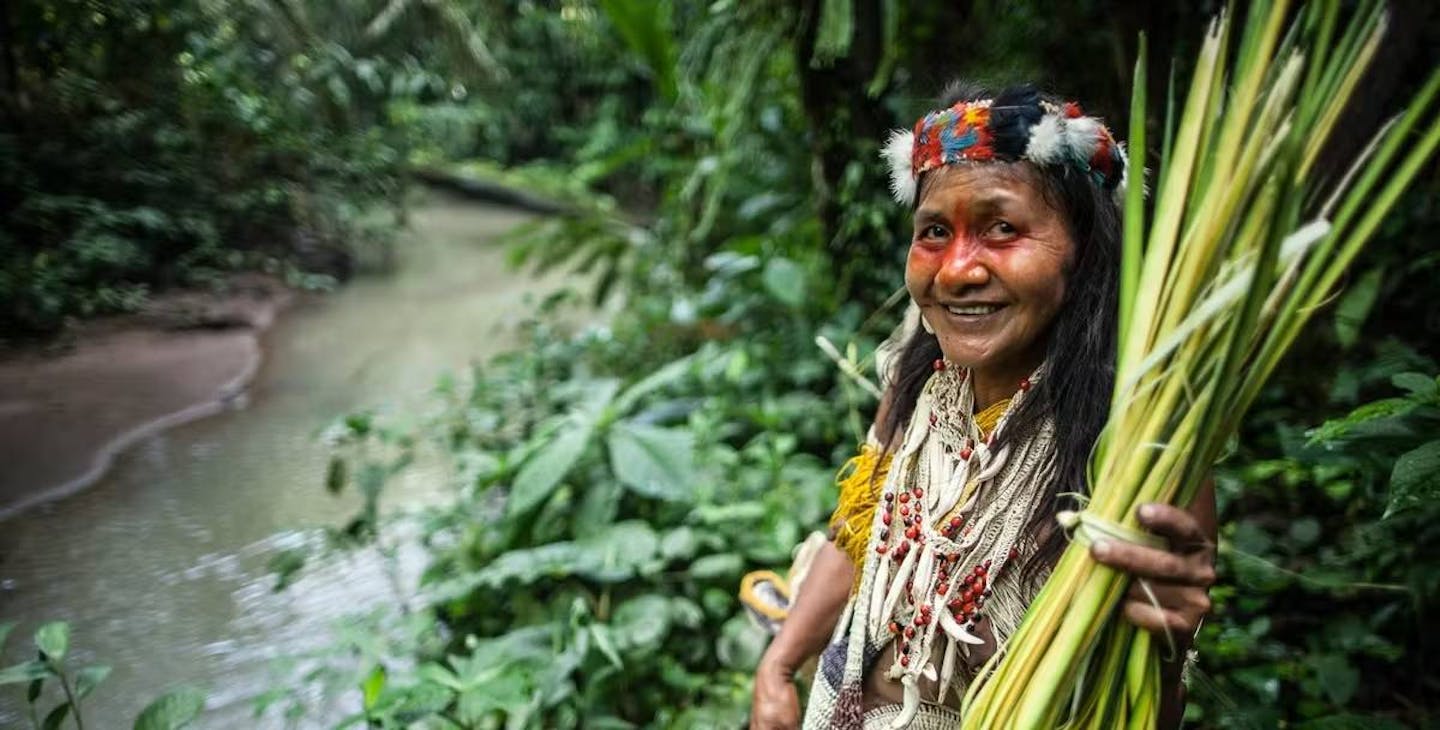Meet the winners of the Equator Prize 2020
The Equator Initiative is pleased to announce the winners of the Equator Prize 2020. Each of the 10 winners represents outstanding community and Indigenous initiatives that are advancing nature-based solutions for local sustainable development.
Following a global call for nominations, the Equator Initiative received 583 nominations from 120 countries around the world. An extensive, four-stage peer-review process guided by our Technical Advisory Committee of international experts was undertaken over the last several months. Winners will be celebrated through a series of virtual events in September 2020 during Climate Week NYC, in parallel with the UN General Assembly and Nature Summit.
Meet the winners
Vie Sauvage
Vie Sauvage has pioneered a holistic model for community development, conservation, and peace-building, helping create and manage a 4,875 square kilometer reserve for the bonobo (a great ape), and other endangered species. The initiative has created jobs in the management of the reserve and ecotourism.
Location: Tshuapa, Democratic Republic of the Congo
Ecosystem: Forests, wetlands and rivers
Nashulai Maasai Conservancy
Among the first Indigenous owned and managed conservancies in East Africa, Nashulai Maasai Conservancy is at the forefront of a paradigm shift towards a mixed-use conservation model. This 2,400 hectare protected area forms an important ecological corridor combining Indigenous ecological knowledge with cutting-edge science benefiting economic development and cultural programming, so humans, livestock, and wildlife all prosper in harmony.
Location: Sekenani, Kenya
Ecosystem: Wetlands and rivers, grasslands and drylands
Salween Peace Park
In an area of South-Eastern Myanmar marked by 70 years of conflict, the Salween Peace Park is the result of a Karen Indigenous grassroots movement for stability and conservation of a 5,400 square kilometer continuous ecosystem made up of protected areas, community forests and Indigenous lands. Based on an Indigenous vision of sustainable use of natural resources, coupled with traditional practices and taboos, local communities lead a life that respects wildlife and local ecosystems.
Location: Karen State, Myanmar
Ecosystem: Forests and mountains
Asociación de Forestería Comunitaria Utz Che’
Utz Che’ is a network of over 40 Indigenous and local communities and farmer associations representing about 200,000 people in the entire country, 90% of them Indigenous. Supporting its members in the sustainable management of their resources, mainly highland cloud forests and watersheds, the organization guides advocacy efforts of marginalized communities confronting encroachments on their territories.
Location: Palín, Guatemala
Ecosystem: Forests
Alianza Ceibo
Alianza Ceibo unites four Indigenous peoples in their struggle to counter environmental degradation to protect over 20,000 square kilometers of primary rainforest across four provinces and 70 communities in the Ecuadorian Amazon. Alianza Ceibo’s activities provide clean water to over 6,000 people, connect remote communities to solar power, and support women entrepreneurs.
Location: Sucumbíos, Ecuador
Ecosystem: Forests, wetlands and rivers
Vondron’Olona Ifotony Tatamo Miray an’Andranobe
In 2004, facing the deterioration of the 90-hectare Andranobe Lake which provided the base of their local fishing and agriculture livelihoods, four communities in central Madagascar came together to form the community-based organization Tatamo Miray an’Andranobe (TAMIA). Based on customary social contracts, TAMIA has served as a platform to restore the lake’s water level and quality, remove invasive aquatic species, and repopulate fish stocks.
Location: Vakinankaratra, Madagascar
Ecosystem: Forests and mountains
Alliance of the Indigenous Peoples of the Kayan Mentarang National Park
Bringing together 11 Indigenous groups, Forum Musyawarah Masyarakat Adat Taman Nasional Kayan Mentarang (FoMMA) advocates for the rights of communities who live on 20,000 square kilometers of customary land in Northern Kalimantan. A large portion of their ancestral lands, mainly made up of forests and rivers, overlaps with Kayan Mentarang National Park. FoMMA’s communities pursue traditional forest-based local economies, and protect large swaths of rainforest in an effort to mitigate climate change and retain traditional ways of life.
Location: North Kalimantan, Indonesia
Ecosystem: Forests and mountains
Boon Rueang Wetland Forest Conservation Group
The Boon Rueang Wetland Forest Conservation Group formed in response to threats against the largest wetland forest in the Ing River Basin in Northern Thailand. The community has maintained stewardship over the 483 hectare forest through coordinated advocacy and dialogue with stakeholders, while pursuing a successful community forestry model under a landscape conservation paradigm.
Location: Chiang Rai, Thailand
Ecosystem: Forests, wetlands and rivers
Mujeres y Ambiente SPR de RL de CV
In the state of Querétaro, this women-founded and women-led association has been working with an environmentally-minded Spanish company, the Mexican Government, and a local university to develop and market cosmetics based on the ‘toronjil’, or lemon balm plant. The association supports women entrepreneurs to grow their agricultural micro-businesses, and engages in biodiversity conservation, restoration, stabilization of soils, and nursery cultivation.
Location: Queretaro, Mexico
Ecosystem: Grasslands and drylands
Łutsël K’e Dene First Nation
After 40 years of advocacy, the Łutsël K’é Dene First Nation achieved the vision of protecting their land and waters for future generations in 2019 by signing agreements with national and territorial governments to officially create Thaidene Nëné, a 26,000 square kilometer protected area between the Canadian boreal forest and the arctic tundra. This intact landscape features some of the cleanest freshwater in the world and provides habitat for grizzly bears, wolves, moose, wolverine and some of the last herds of barren-ground caribou. It is also a globally significant carbon sink.
Location: Łutsël K'é, Canada
Ecosystem: Forests, wetlands and rivers

